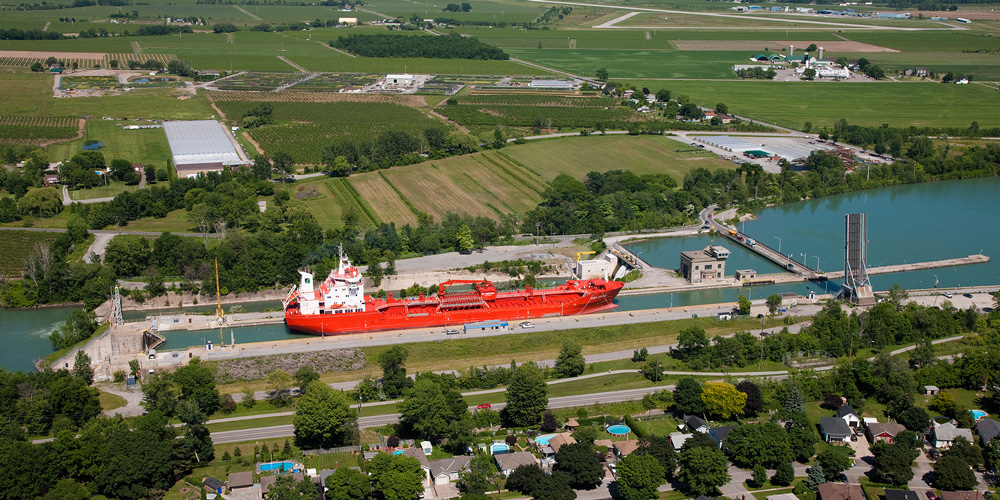Seaway’s 1st Quarter Results Show Strong Gains in Traffic
July 18, 2006
Cornwall, July 18, 2006 – The St. Lawrence Seaway Management Corporation (SLSMC) reports that traffic and tonnage volumes on the Seaway continue to post strong gains, with total tonnage at the end of the 1st quarter up 15% on a year over year basis. The rise in tonnage is distributed across a broad spectrum of cargoes from the traditional staples of grain and iron ore to various aggregates and bulk liquids. Steel is a stellar performer, both in terms of demand from domestic mills for iron ore and coal to imports of steel products from a wide range of countries.
Imports of steel from countries such as Russia, South Korea, Egypt, Turkey, Germany, and China have contributed to a 30% rise in the number of ocean vessels entering the Seaway. Coinciding with this rise in traffic, enhanced verification procedures are in place to ensure that vessels are using the most advanced ballast water management practices.
All vessels are inspected prior to entering the Seaway to ensure that ballast water management follows today’s best practices and 100% of the ballast water tested was found to be compliant with regulations and have ‘salinity content’ in excess of the ‘30 parts per thousand’ stipulated for safe ballast water discharge. In addition, testing has been extended to loaded vessels entering the system with no ballast on board (the so called “NOBOB’s”) by Transport Canada and the U.S. Coast Guard.
The SLSMC’s 2005/2006 annual report, Growing Towards Sustainability, was released at the Corporation’s Annual General Meeting which took place in Montreal on July 5th. The report heralds the SLSMC’s principled and effective stewardship, evidenced by increases in transits, new tonnage achieved in new markets, historically high levels of system reliability and enhanced safety.
Richard Corfe, President and CEO of the SLSMC, outlined that “as the Seaway system is a shared resource benefiting the citizens of two countries, we must simultaneously balance many interests as we manage a vital transportation artery, serve as stewards over a resource where communities work and play, and champion environmental sustainability. Serving all of these distinct interests is a challenge that we must continue to meet in perpetuity.”
Since its inception in 1959, over 2.3 billion tonnes of cargo valued at over $285 billion has moved via the Seaway. Today, marine transportation within the Seaway continues to support the well-being of millions of people on both sides of the Canada/US border and, through increased use, carries the promise to do even more. The SLSMC remains dedicated to promoting the economic and environmental benefits of the marine mode, attracting new cargoes to the Seaway and leveraging technology to enhance the system’s performance.






